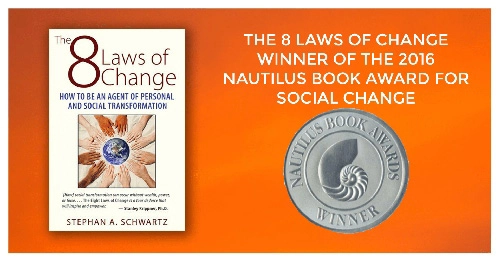Joshua S Hill, - Clean Technica
Stephan: Because of the massive pollution in China the government has finally awakened. Since China is a one party system just as the Chinese built entire cities in a year that no one yet occupies so they will, I think, respond to converting away from carbon energy. As this report describes, they are poised to make a national commitment to end coal in large areas of the country in six years.
We could never do this in the U.S. As a result, I think, China is going to go non-carbon quite quickly. They are also going to prove that vast fortunes and advantages, including new technologies are to be had in the transition. The U.S., because the government is hamstrung by the vice-like hand of the carbon energy interests will labor far behind. This report illustrates what I mean.
Click through to see the map.
The Chinese state press agency, Xinhua, has reported that Beijing is looking to ban coal use by 2020 – a massive development in a country known for smoggy cities and developing world energy-usage.
‘Beijing will ban coal sales and use in its six main districts and other regions by the end of 2020 to cut air pollution, local authorities said on Monday,” according to Xinhua, who remain one of the most effective means of getting information out of China (especially if you don’t speak or read a word of Chinese).
Xinhua quotes the Beijing Municipal Environmental Protection Bureau as saying that the districts of Dongcheng, Xicheng, Chaoyang, Haidian, Fengtai and Shijingshan will be the first districts to stop using coal and its related products.
Furthermore,, clean energy is expected to replace coal in the districts, though the specifics of such a move are as yet unclear.
According to the Real-time Air Quality Index (AQI) at the time of writing, pollution levels in Beijing are relatively ‘Good” – but these figures grow distressingly ‘Unhealthy” as you move further out from the city-center. As a whole, Beijing air pollution is ranking as “Unhealthy for Sensitive Groups’ – a regular occurrence the government would appear to want […]
No Comments
ANDREW DUGAN and STEPHANIE KAFKA, - The Gallup Organization
Stephan: You would think that it would be in a nation's interest to make it easy for people to go as far educationally as they can and wish to. Both they and the economy benefit. But that is not how we do it in the U.S. By making a college education both almost indispensable for getting a job, yet crippling financially to obtain, we have once again put profit first and wellness somewhere far behind. Here is the result. The country is crippled in so many ways because of this untrammeled profit affliction. Like the Golden Calf it is Biblical in proportion.
Click through to see the charts.
WASHINGTON, D.C. — College graduates who carry a high amount of student debt appear to face long-term challenges that stretch beyond just their finances. A new analysis of Americans who graduated college between 1990 and 2014 shows that graduates who took on the highest amounts of student debt, $50,000 or more, are less likely than their fellow graduates who did not borrow for college to be thriving in four of five elements of well-being: purpose, financial, community, and physical.
Percentage of U.S. College Graduates Thriving in Five Elements of Well-Being, by Amount of Student Loan Debt
Although graduates with no student loan debt are slightly more likely than their indebted peers to be thriving socially, the differences are not statistically significant.
Gallup finds the starkest differences among these groups in the areas of financial and physical well-being. Higher debt signifies lower likelihood of thriving in these two areas of well-being. Graduates who went the deepest into debt to obtain their college degree, for instance, are far less likely to be thriving than graduates who took out no debt, by 15 percentage points in financial well-being and 10 points in physical well-being. The pattern is similar for graduates’ sense of purpose, although those who […]
No Comments
RICK NOACK, - The Washington Post
Stephan: The worldwide Water is Destiny Migration Trend I have been talking about for years, has now surfaced in the first tier corporate media. This is going to be the first of many such stories.
Tuvalu’s coastline consists of white and sandy beaches, green palm trees and mangroves. It is hard to imagine that anybody would want to leave this small island nation, located between Australia and Hawaii, voluntarily. But Tuvalu has become the epicenter of a landmark refugee ruling that could mark the beginning of a wave of similar cases: On June 4, a family was granted residency by the Immigration and Protection Tribunal in New Zealand after claiming to be threatened by climate change in its home country, Tuvalu. The news was first reported by the New Zealand Herald on Sunday.
The small Pacific island nation sits just two meters above sea level. If the current sea level rise continues, experts believe the island might disappear in approximately 30 to 50 years. Tuvalu shares this existential threat with many other island nations and coastal regions, which have struggled for years to raise international awareness about their tragic plight. Predictions for climate change-induced displacement range widely from 150 to 300 million people by 2050, with low-income countries having the far largest burden of disaster-induced migration, according to the Internal Displacement Monitoring Center.
Those threatened by sea-level rise, droughts or other natural catastrophes face an epochal […]
No Comments
Thursday, August 7th, 2014
PAUL CRAIG ROBERTS, former Assistant Secretary of the US Treasury - Counterpunch
Stephan: This is an important essay describing what is going on in the United States today. The data is clear: America is on the wrong track economically. And we simply will not tell ourselves the truth.
Last week’s government guesstimate that second quarter 2014 real GDP growth will be 4% seems nonsensical on its face. There is no evidence of increases in real median family incomes or real consumer credit that would lift the economy from a first quarter decline to 4% growth in the second quarter. Middle class store closings (Sears, Macy’s, J.C. Penney) have spread into the Dollar stores used by those with lower incomes. Family Dollar, a chain in the process of closing hundreds of stores is being bought by Dollar Tree, the only one of the three Dollar store chains that is not in trouble. Wal-Mart’s sales have declined for the past 5 quarters. Declining sales and retail store closings indicate shrinking consumer purchasing power. Retail facts do not support the claim of a 4% GDP growth rate for the second quarter, and they do not support last Friday’s payroll job claim of 26,700 new retail jobs in July.
What about the housing market? Don’t the headlines accompanying last Friday’s payroll jobs report, such as ‘Hiring Settles Into Steady Gains,” mean more people working and a boost to the economy from a housing recovery? No. What […]
No Comments
Thursday, August 7th, 2014
KATIE VALENTINE, - Climate Progress
Stephan: Here we see the Canadian version of allowing profit to trump all other considerations. The Virtual Corporate States Trend is clearly evident in the two stories. VCS consider national boundaries and laws subsidiary to their interests. They will do this anywhere. The choice is always maximize profit. This economic model is killing us.
Click through to see video.
Hundreds of people in British Columbia can’t use their water after more than a billion gallons of mining waste spilled into rivers and creeks in the province’s Cariboo region.
A breach in a tailings pond from the open-pit Mount Polley copper and gold mine sent five million cubic meters (1.3 billion gallons) of slurry gushing into Hazeltine Creek in B.C. That’s the equivalent of 2,000 Olympic swimming pools of waste, the CBC reports. Tailings ponds from mineral mines store a mix of water, chemicals and ground-up minerals left over from mining operations.
The flow of the mining waste, which can contain things like arsenic, mercury, and sulfur, uprooted trees on its way to the creek and forced a water ban for about 300 people who live in the region. That number could grow, as authorities determine just how far the waste has traveled. The cause of the breach is still unknown.
So far, water-use bans have been issued for the town of Likely and for people living near Polley Lake, Quesnel Lake, Hazeltine Creek (which flows into Quesnel Lake), and Cariboo Creek, as well as the Quesnel and Cariboo River systems. Authorities so far haven’t issued water bans for the Fraser River – […]
No Comments










